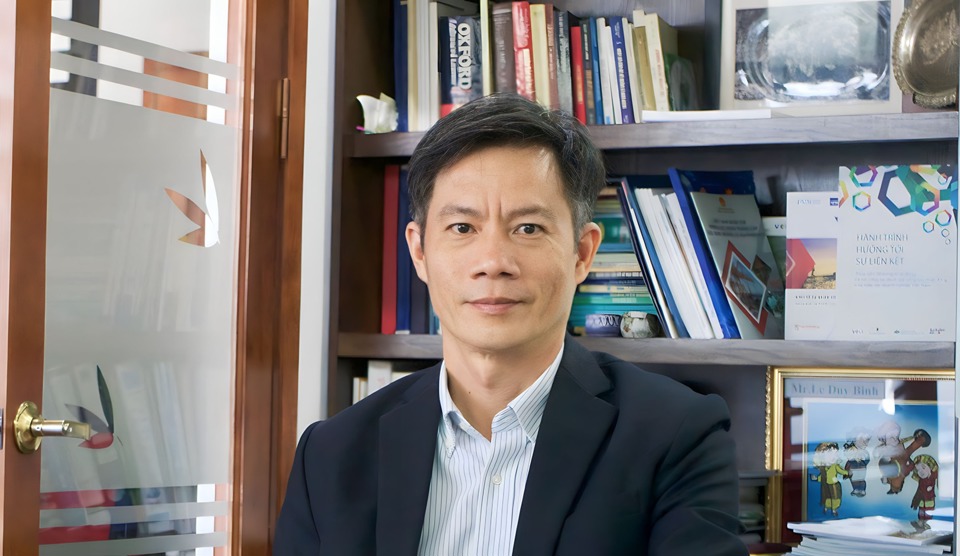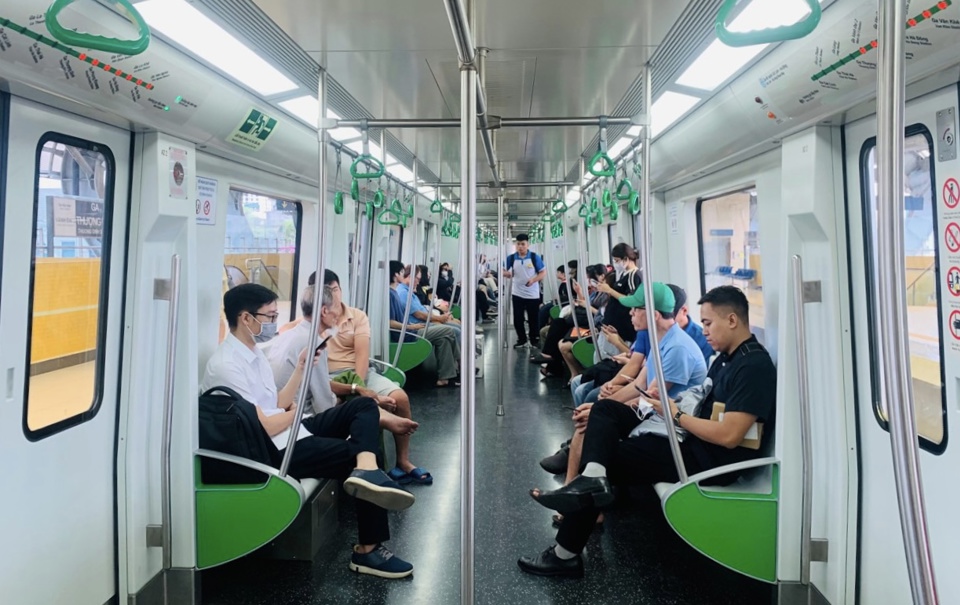Amended Capital Law unlocks new approach for urban railway development
Given the potential increase in property values when new roads and rail are built, the transit-oriented development model covered by the bill stands out as a highly promising and practical mechanism.
Managing Director of Economica Vietnam Le Duy Binh shared with The Hanoi Times that the amended Capital Law, with provisions regulating urban development through the transit-oriented development (TOD) model, would empower Hanoi to harness land resources to advance urban railways.
| Managing Director of Economica Vietnam Le Duy Binh. |
What is your assessment of the provisions in the draft amended Capital Law that focus on TOD?
By the TOD mechanism, Hanoi will conduct auctions for the rights to use land, underground space, and elevated structures within the TOD areas based on Capital Planning, Capital General Planning, zoning planning, and detailed urban railway planning.
Proceeds from these auctions will be directly invested in the construction of urban railway lines, in public transport systems interconnected with the urban railway, and in technical infrastructure linked to the stations.
This strategy enables the utilization of funds generated from the auction of rights to use above-ground, underground, and overhead space for the advancement of urban railway projects. Integrating urban railway initiatives with urban development projects ensures that the increased value of reclaimed land directly contributes to the construction of essential public infrastructure. This approach rationalizes the regulation of land value appreciation and promotes harmonious relationships among businesses, residents, and the government.
For the upcoming urban railway lines, excluding those already built or under construction, the TOD model outlined in the draft is expected to give rise to massive TOD developments covering thousands of square kilometers and hundreds, or even thousands, of hectares of surface, underground space, and elevated space that can be auctioned. This represents a substantial resource that can be turned into capital, facilitating direct investment in creating an indispensable public transport system. This, in turn, contributes to the realization of Hanoi's vision as a smart, modern, green, clean, and beautiful city.
How will people directly benefit from the implementation of the TOD model outlined in the draft amended Capital Law?
Given the potential increase in land value as new roads and railways are built, the TOD model stands out as a promising and practical mechanism. It has the potential to generate resources for Hanoi and facilitate the rapid development of urban railway systems.
Timely completion of urban railway projects not only yields immediate benefits in terms of improved traffic and transportation but also alleviates public frustration caused by prolonged construction activities, barriers, and roadblocks. These disruptions cause traffic congestion, increase social costs, and diminish the city's competitiveness in attracting tourism and investment.
The implementation of the TOD model in urban railway projects, centering on the principle of establishing the urban railway transit hub as a focal point for residential, commercial, and office spaces within walking distance, offers advantages in terms of enhanced land use efficiency. Moreover, it directly benefits the public by providing access to public amenities, promoting community health, reducing individual motorized transportation, curbing emissions contributing to environmental pollution, and preserving and promoting cultural values.
| The Cat Linh - Ha Dong urban railway. Photo: Hong Thai/The Hanoi Times |
What's your assessment of Hanoi's potential for compact urban development, emphasizing high population density in the central area, economic growth, environmental stability, and reduced traffic congestion through the TOD model with urban railways at its core?
I believe that the TOD approach will play a vital role in shaping compact cities. These cities will feature a mix of land-use functions, including entertainment, services, commerce, offices, public spaces, green areas, schools, and hospitals. Despite their high density, effective travel and traffic solutions provided by robust public transportation systems will prevail. This approach enhances the potential for equitable resettlement opportunities for people whose land is reclaimed within the TOD zone.
Moreover, the creation of these compact urban zones, coupled with the resolution of traffic issues through the TOD model's high-capacity transit systems, fosters favorable living and working conditions. It encourages walking over personal vehicle usage. Urban areas developed through TOD also open up numerous business opportunities for residents by providing easier access to goods and services within the locality.
Additionally, the TOD model accelerates the renovation, beautification, and reconstruction of central urban areas, facilitating the development of satellite cities and towns. This, in turn, aids in the achievement of objectives related to facility relocation and the expansion of universities, colleges, hospitals, and populations within central urban zones. TOD significantly contributes to appreciating property values for residents within the TOD area and its surrounding neighborhoods.
Will the adoption of the affordable TOD model create business opportunities for businesses and real estate investors?
As TOD represents a comprehensive solution for urban planning, redevelopment, and development, focusing on utilizing the urban railway traffic hub as a focal point for population concentration, its implementation in the form of TOD is poised to create lucrative business opportunities for enterprises and real estate investors. This is particularly true within planned TOD areas. These areas, strategically located around stations, have high commercial value due to their integration into the urban railway system. They are considered prime or have the potential to become prime real estate in the future.
By adopting the TOD approach, Hanoi gains greater financial autonomy and reduces its reliance on borrowed capital. This, in turn, provides greater independence in the selection of technology, contractors, and legal terms for potential claims against contractors. It also provides an opportunity for regulatory agencies to facilitate the involvement of domestic businesses in the design, construction, operation, maintenance, and supply of urban railway lines. This participation covers a range of services, including engineering services, software, and signaling for urban railway lines.
This proactive approach to investor decision-making regarding the selection of contractors or suppliers for urban railway construction projects opens up possibilities for the creation of an industry and support services. This encompasses design, construction, operation, and maintenance, as well as businesses supplying raw materials for the construction process, such as iron, steel, cement, and station structures.
Thank you for your time!













